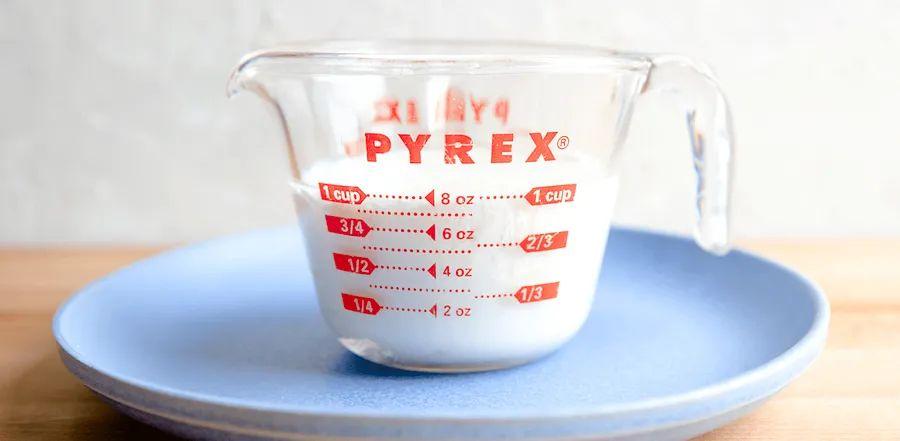How to Create Buttermilk at Home

It happens to the best of us—you're deep into making those fluffy buttermilk pancakes, and suddenly it hits you: you don't have buttermilk! It's right there in the recipe, but somehow you forgot to grab it. Don't panic! There's no need to abandon your breakfast dreams. You can easily whip up a homemade version that will work just as well. Here's how to do it.
What Exactly Is Buttermilk?
Maybe you've bought buttermilk before without really thinking about what it is. Interestingly, today's store-bought buttermilk isn't too far removed from the traditional method of making it.
Long ago, people would churn their own butter (a fun activity you might want to try if you're looking for something new to do). The leftover liquid was rich in protein and low in fat. It was then left to ferment, sometimes overnight, allowing the natural lactic acid to break down the milk sugars and create the characteristic tangy flavor we know as buttermilk.

Thanks to advances in food safety and technology, buttermilk is now created by introducing live, active cultures to pasteurized milk. This modern process mimics the traditional method but is safer than the old way of simply leaving butter by-product out on the counter and waiting for fermentation.
Why Choose Buttermilk Over Regular Milk?
Unlike regular milk, which has a mild and neutral taste, buttermilk stands out with its bold, tangy flavor. This acidity makes it a perfect addition to a variety of recipes. In baking, it helps make cakes and biscuits light and fluffy. In marinades, it adds flavor while tenderizing meat. For dressings and sauces, buttermilk adds that signature bright, zesty kick—nothing beats the tang of homemade buttermilk ranch dressing.
Is It Possible to Make Buttermilk at Home?
Absolutely! Will it taste exactly like the store-bought version? Not quite, since it won't contain live, active cultures. However, if you're in a bind, our easy method below is a fantastic substitute. For homemade (uncultured) buttermilk, all you need is plain dairy milk and an acidic ingredient. We recommend the mild flavor of white or distilled vinegar, but you can also use any light-colored vinegar or even citrus juice like lemon or lime.
Here's how it works: Add 1 tablespoon of your acid to a 1-cup measuring cup, then pour in milk until it reaches the 1-cup mark. Stir it together and let it sit for at least 5 minutes, or up to 10 minutes for best results.
How to Create Buttermilk
Step 1:
Measure out 1 tablespoon of your chosen acid (lemon juice or distilled vinegar are great options) and select your preferred dairy milk.

Step 2:
Pour the acid into a measuring cup, then add the milk until it reaches the 1-cup line.

Step 3:
Stir the mixture well, then let it sit for 5 to 10 minutes to thicken.

Step 4:
Use it in your favorite recipes that require buttermilk.

How to Use Buttermilk
Now that you've mastered buttermilk, it's time to incorporate it into your cooking! As we've already discussed, buttermilk is a key ingredient for both tenderizing and leavening baked goods. This makes it ideal for light, fluffy pancakes, biscuits, and moist pound cake.

Looking for a delicious dressing? Try making your own Homemade Ranch Dressing or Blue Cheese Dressing. And don’t forget about chicken! Buttermilk works wonders as a marinade, adding flavor and tenderness to dishes like Air Fryer Fried Chicken or Instant Pot Chicken and Dumplings. Have leftovers? Freeze any extra buttermilk in ice cube trays for future use!

1

2

3

4

5
Evaluation :
5/5